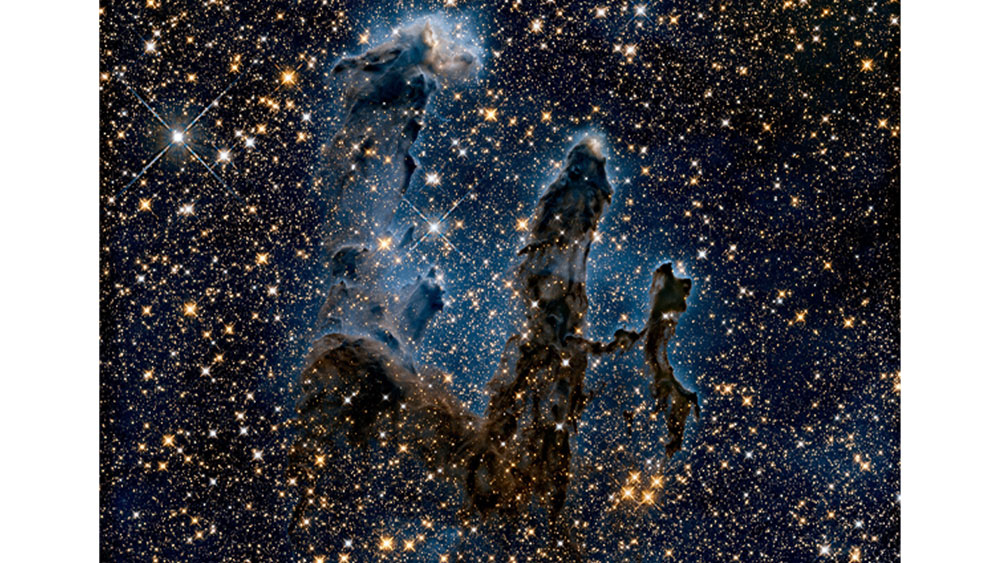Contrary to what some scientists claim, there is compelling philosophical and scientific evidence that a Creator of the universe exists. For example, the conditions described by the two laws of thermodynamics demand special creation.1 As the late Dr. Henry Morris noted, “The Second Law says the universe must have had a beginning—otherwise it would already be completely disordered. The First Law (conservation of mass-energy) says it could not have begun itself.”2 The sovereign and eternal God of the Bible is the only Cause sufficient to generate the universe as we understand it.3
Secondly, the fine-tuning argument claims the natural laws governing the material world encompass fundamental constants. These numbers are precisely calibrated for the existence of intelligent life, and if any of them deviated by even a small amount, stars, planets, chemistry, and living things could not exist. The One who designed the universe cannot Himself be subject to these numbers since He established them in the first place.4,5
A third argument is predicated on the fact that mathematics describes the material world exceptionally well. There is no reason why mathematics and physics should work so harmoniously together—but they do! The remarkable applicability of mathematics suggests the existence of a transcendent mind who created the universe with an intricate blueprint.6 In the words of the Nobel Prize–winning theoretical physicist Paul A. M. Dirac (1902–1984), “God is a mathematician of a very high order, and He used advanced mathematics in constructing the universe.”7 In addition, Albert Einstein (1879–1955), author of the special and general theories of relativity, once said, “How can it be that mathematics, being after all a product of human thought which is independent of experience, is so admirably appropriate to the objects of reality?”8
These are merely three arguments for divine creation. However, they should not even be necessary. All nature proclaims not only the existence of God, but also His incredible power and magnificence. As Psalm 111:2–3 says, “The works of the LORD are great, studied by all who have pleasure in them. His work is honorable and glorious, and His righteousness endures forever.”
Moreover, all people innately recognize there is a God—though they may be loath to admit it. According to Romans 1:19, “What may be known of God is manifest in them, for God has shown it to them.” Despite their intellectual pretensions, the real reason people deny our Creator is not due to a lack of evidence but because of their unwillingness to forsake sin: “Men loved darkness rather than light, because their deeds were evil” (John 3:19).
The question then becomes, Why did God create? Within the eternal relationship between the Father, Son, and Holy Spirit, there is absolute perfection. This implies that creation cannot be for God’s advantage—He did not need to create.9 Thus, it must be for the benefit of those who were created. It aims to give finite individuals the opportunity to know their Creator. Not only is salvation a gift of God’s grace, but creation is as well!10 Revelation 4:11 says, “You are worthy, O Lord, to receive glory and honor and power; for You created all things, and by Your will they exist and were created.” Colossians 1:16 reiterates this point: “For by Him all things were created that are in heaven and that are on earth, visible and invisible, whether thrones or dominions or principalities or powers. All things were created through Him and for Him.”
God is a creative Being, and creating gives Him pleasure. Because He is personal, God also derives satisfaction from establishing relationships with us, His most valuable creation. In light of His absolute holiness and sovereignty, we are astounded that God would crown man “with glory and honor” (Psalm 8:5) and refer to His redeemed people as “friends” (John 15:14–15).
References
- Although no model of origins can be tested via the scientific method—since history is not observable, measurable, and repeatable—any such model can be used to predict and compare the observable data that result from history. The model that most closely aligns with the data is likely correct.
- Morris, H. 1974. The Stars of Heaven. Acts & Facts. 3 (1).
- Ibid. See also Morris, H. 1974. Scientific Creationism. San Diego, CA: Creation-Life Publishers, 24–37.
- Borrow, J. and F. Tipler. 1988. The Anthropic Cosmological Principle. New York: Oxford University Press.
- The fine-tuning argument for the existence of God is a specific application of the teleological argument—the reasoning that the appearance of purpose or design is itself evidence of a designer. This primarily centers around the precise characteristics of the universe and its apparent deliberate organization, which sustains intelligent life. However, not all fine-tuning arguments are valid because some presuppose the validity of the Big Bang despite its biblical and scientific problems.
- See Corrado, J. The Fine-Structure Constant: Evidence of Design in Nature. Creation Science Update. Posted on ICR.org July 20, 2023.
- Dirac, P. 1963. The Evolution of the Physicist’s Picture of Nature. Scientific American. 208 (5): 45.
- Hawking, S. 2007. A Stubbornly Persistent Illusion: The Essential Scientific Works of Albert Einstein. Philadelphia, PA: Running Press, 249.
- Creation exists for Jesus’ glory (John 17:24; Romans 11:36) and for His pleasure (Revelation 4:11). All things are made by Jesus, through Jesus, and for Jesus. They are the result of His own power.
- Morris, J. 2002. Why Did God Create Us? Acts & Facts. 31 (7).
Stage image: Eagle Nebula’s Pillars of Creation (in infrared light)
Stage image credit: Copyright © NASA/ESA Hubble Space Telescope, 2015. Used in accordance with federal copyright (fair use doctrine) law. Usage by ICR does not imply endorsement of copyright holder.
* Dr. Corrado earned a Ph.D. in Systems Engineering from Colorado State University and a Th.M. from Liberty University. He is a freelance contributor to ICR’s Creation Science Update, works in the defense and nuclear industries, and is a senior officer in the U.S. Naval Reserve.
























